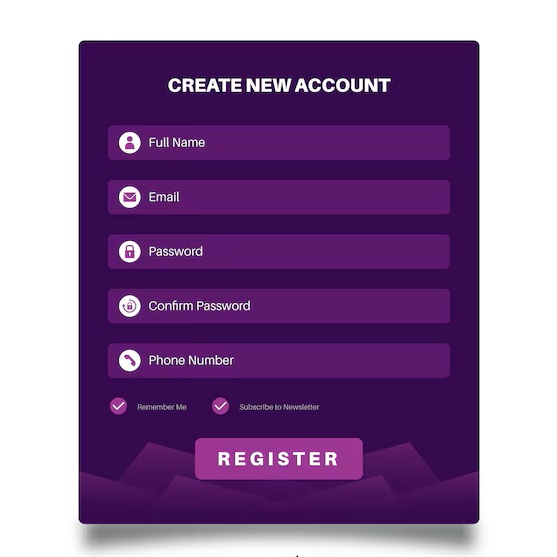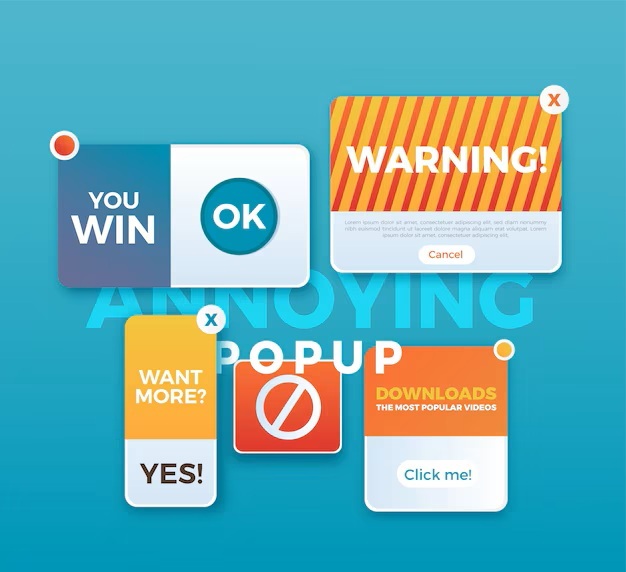As a web design studio working with gambling platforms, Wndeer has witnessed how poor UX choices directly impact user acquisition and retention. For online casino operators, design is not only about aesthetics. Every interaction, screen, and form must drive one goal — conversion. From registration to depositing and placing bets, friction at any stage increases drop-offs and reduces revenue.
The gambling industry, unlike general e-commerce or content platforms, deals with user expectations tied to real money and immediate gratification. That means even a second of delay, a misleading button, or a poor popup can result in a loss of trust — and money. Below we examine ten common UX mistakes that lead to lower conversion rates on casino platforms, backed by real examples and expert analysis.
Overcomplicated Navigation Structures
In online gambling, users want to find games quickly, whether it’s slots, poker, blackjack, or live roulette. However, we’ve audited dozens of platforms where the site architecture includes too many categories, redundant submenus, or inconsistent naming conventions. This creates confusion and increases bounce rates. One example is a 2022 redesign project we undertook for a mid-sized casino operator in Malta. Their site featured over 14 main navigation items, with five of them leading to overlapping game categories. By consolidating them into five distinct sections, click-through rates to core pages improved by 27% over three months.
It is a mistake to assume users will take the time to learn how your site is structured. Most traffic in gambling comes from paid acquisition channels or affiliate links, and these users don’t arrive with patience. They expect instant clarity. Labels should match expectations. “Live Games” and “Live Casino” shouldn’t be separate if both lead to similar content. Using recognizable terms is better than inventing branded language that lacks clarity. Breadcrumbs, consistent placement of menus, and visibility of current sections are fundamental design aspects often neglected.
Poorly Designed Registration Forms
The first-time registration experience directly influences whether a user becomes a customer. Casino sites that add friction here see lower sign-up rates, no matter how strong their marketing funnel is. Lengthy forms asking for too many details upfront remain one of the most common issues. Even in regulated markets like the UK or Germany where certain data points are required by law, the way the form is broken into steps can drastically change outcomes.

Take the case of Kindred Group. In 2021, they ran several A/B tests across their brands, including Unibet, to reduce form abandonment. By moving non-mandatory fields like address to the second step and emphasizing email, password, and phone number first, they improved completion rates by 19%. Users need a quick win. Forcing them to complete a six-field form with two dropdowns, three inputs, and a checkbox just to proceed causes hesitation.
Another common misstep is lack of inline validation. When an error only appears after clicking “Next,” users must backtrack — an experience no one enjoys. Pre-fill options, field-specific error prompts, and social sign-up integrations are now standard in top-performing platforms, yet smaller casinos often overlook them.
Aggressive and Distracting Popups
Popups remain one of the most misused elements in casino UX. Whether they’re meant for promotions, cookie consent, or login prompts, excessive or poorly timed popups break user flow and lead to early exits. A 2023 usability study by Baymard Institute found that full-screen interstitials asking for email sign-ups on entry caused up to 38% of users to leave immediately if there was no clear close button or delay in rendering the content beneath.
Casino users are task-oriented. They are not on the site to browse or read newsletters. They arrive intending to play or deposit. Blocking that process within the first five seconds with a newsletter prompt or bonus spinner wastes a paid click. Moreover, repeated popups for promotions — especially if already seen — can create fatigue.
We worked with an Eastern European operator in 2023 who used six separate modals across their homepage. After consolidating promotional popups into one sidebar element and removing the login gate for unregistered users, we measured an 11% increase in average time on site. The takeaway is simple: use popups sparingly, make them dismissible, and ensure they respect user flow.

Lack of Mobile Optimization for Forms and Buttons
Over 70% of gambling traffic in 2024 comes from mobile devices. Despite this, many casino websites still rely on designs that were built for desktop-first layouts. Mobile users face buttons that are too small, modals that don’t scale, and forms that require excessive typing.
One specific case we observed involved a casino using dropdowns for country selection without search functionality. On mobile, this meant scrolling through a list of 150+ countries. When that single field was replaced with an auto-complete input, abandonment on that step dropped from 26% to 7%.
Thumb reach, tap targets, and keyboard behaviors matter on mobile. For example, if a form field is for numbers, but triggers the default keyboard instead of the numeric one, it slows users down. Small oversights like these compound across pages. Input fields need padding; buttons must be large enough to prevent misclicks; and forms should adapt fluidly to vertical layouts.
Confusing Bonus Redemption Flows
Bonuses drive the first deposit in many casino sites, especially in regulated markets where operators rely on welcome offers to stand out. However, the process of claiming a bonus is frequently unclear. Users don’t understand if they need to opt in, enter a code, or if it’s applied automatically. These misunderstandings lead to support tickets and refund requests, but more critically, they create mistrust.
888casino made changes in 2022 to simplify their bonus activation process. Previously, it involved entering a promo code during sign-up, which was easy to miss. After switching to an automatic claim system with clear pre-deposit messaging, their conversion to first deposit improved by 15% within 30 days.
UX teams should work closely with compliance to create a transparent, step-by-step breakdown of what the bonus includes, how it can be claimed, and under what terms it can be used. Hiding this information behind long-form legal text only leads to user frustration.
Inconsistent Button Labels and CTA Hierarchy
Casino users move through funnels: homepage > game page > registration > deposit > play. Every click must be deliberate. When call-to-action buttons have inconsistent labels — like “Join,” “Sign Up,” and “Create Account” used interchangeably — users become uncertain. Similarly, placing secondary actions like “Learn More” or “Read Terms” in the same visual style as “Deposit Now” creates decision friction.
In one redesign audit for a sportsbook-integrated casino, we identified 34 unique CTA labels across 10 page templates. After introducing a unified button language with clear primary and secondary actions, bounce rate dropped by 9%, and click-through to deposit increased by 12%.
Clarity and consistency aren’t optional. They directly influence whether users understand where they’re going and what to expect after clicking.
Lack of Game Previews or Demo Options
Before playing a slot or table game, users often want to test it without risking real money. Free play or demo mode fulfills this need. Some platforms hide these options or only offer them after registration, which creates unnecessary barriers.
Play’n GO, a leading game provider, regularly releases demos of their new titles that casinos can integrate directly into listings. Operators who choose to restrict access are reducing a key exploration tool. Data from LeoVegas showed that players who tested at least one game in demo mode before registration were 24% more likely to make a deposit after signing up.
By not offering previews or placing them behind login walls, operators give up an opportunity to convert cautious users into paying ones.
Overuse of Animations and Autoplay Media
Animations can improve visual storytelling, but when overused, they distract and slow down critical actions. Background videos, spinning banners, and audio autoplay increase load times — which is a problem, especially on low-bandwidth connections.
Google’s Core Web Vitals in 2023 placed more weight on “Interaction to Next Paint,” a metric that suffers when autoplay videos block main content. For gambling sites operating in competitive acquisition markets, every second counts. When we audited a popular casino brand in Italy, we found that simply replacing a 10MB homepage banner video with a static version reduced bounce by 6.5% on mobile users.
The rule is simple: animations should support function, not compete with it.
Ignoring Post-Deposit UX
The journey doesn’t end when the user deposits funds. What happens next matters just as much. Platforms that redirect users to a generic dashboard without clear next steps (e.g., “Start Playing”) see higher drop-offs. Confirmation messages must be immediate, informative, and helpful.
Bet365, known for its streamlined funnels, always shows a deposit confirmation page that includes top games, time-limited offers, and immediate CTAs. This reduces friction and nudges users into the next interaction. Casinos that fail to guide the user after payment leave money on the table.
Failure to Localize UX for Target Markets
International casinos often replicate the same interface across multiple geographies without adapting UX to local expectations. This includes date formats, currency symbols, payment methods, and even cultural colors or phrasing.

German users expect SEPA as a default payment option. Japanese players are accustomed to vertical game layouts. Ignoring such differences leads to friction. Localization is more than translation — it’s about respecting how people expect to interact with digital products in their region.
For gambling platforms, UX is not a secondary concern. It drives acquisition, retention, and revenue. As we’ve seen from real cases across the industry, correcting even a handful of the mistakes above can have measurable impact. Conversion is not won by graphics or ad spend alone — it’s earned through thoughtful, tested, and user-focused design.
If you manage or market an online casino and your conversion rates have plateaued, it’s time to look beyond your acquisition campaigns. The answer might be inside your UX.

